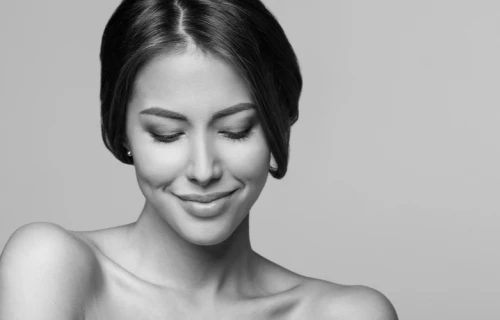Treatment Introduction
Stem Cell Assisted Facelift utilises cutting-edge techniques combined with regenerative medicine to turn back the clock on ageing. This method offers a profound transformation, making your face appear 10 to 15 years younger, enhancing the definition of the facial arches, as well as the skin vitality and firmness. By integrating stem cell treatments, the facelift not only tightens the skin but also rejuvenates it from within.
Patients report exceptional results, including a more refreshed appearance and a significant reduction in visible ageing. The procedure efficiently addresses the soft tissue sagging and bone volume loss that accompany ageing, providing a natural, youthful look without additional surgeries such as neck lifts. Scars heal swiftly and are cleverly concealed within natural folds around the ears and hairline.

Stem Cell Facelift - At a glance
Surgery Time
Recovery Time
Key Information
Before & After Facial Stem Cell Treatment
View Full Gallery



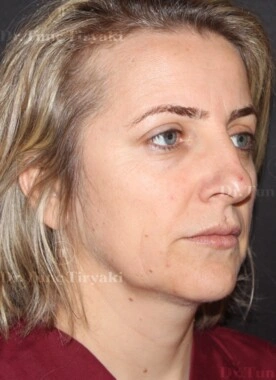

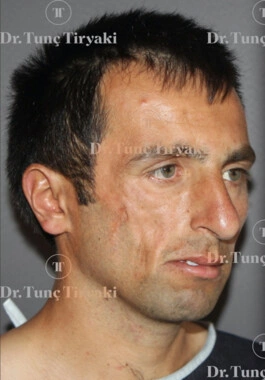





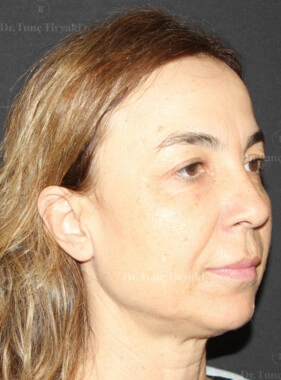






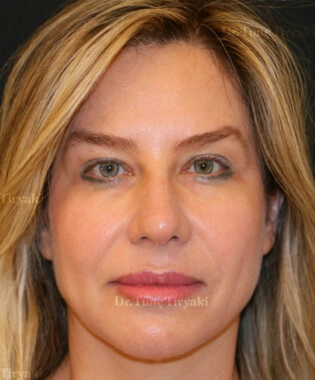


What is Stem Cell Assisted Facelift
As people age, bone resorption occurs, leading to a loss of definition in key facial structures like the temples, cheekbones, and jawline. This results in soft tissue sagging.
The Stem Cell Assisted Facelift, perfected by Mr Tunç Tiryaki, addresses these age-related changes by restoring volume and enhancing skin tightness through advanced surgical techniques and the use of the patient's own stem cells.
Traditional facelifts often result in a pulled appearance due to skin tightening over a diminished facial structure. In contrast, the Stem Cell Assisted Facelift replenishes facial volume and improves contour definition simultaneously, offering a more natural and youthful appearance. The procedure involves minimal fat tissue harvesting through liposuction for stem cell extraction. Stem cells derived from fat tissue are then used to elevate facial muscles and remove excess skin, enhancing the overall aesthetic while reducing operative risks.

Mr Tiryaki's Stem Cell Assisted Facelift offers numerous benefits, including significantly improved facial contours, rejuvenated skin quality, and natural-looking youthful results by utilising the regenerative properties of your own stem cells.
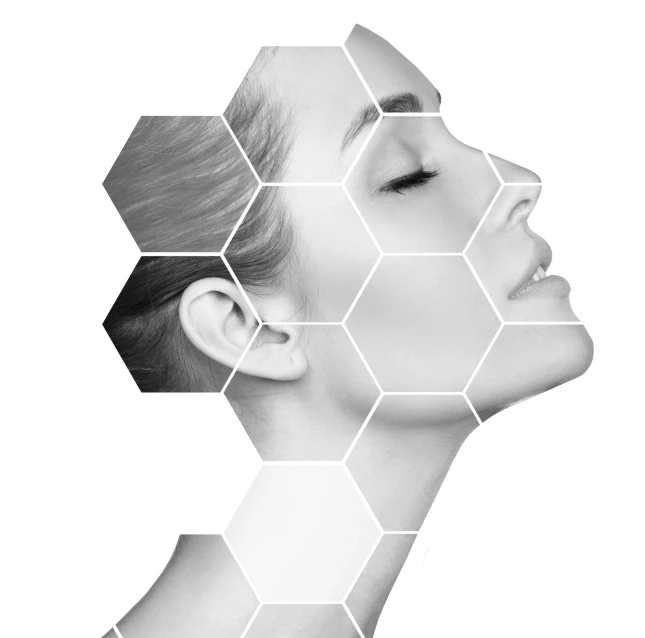
What are the benefits of Stem Cell Assisted Facelift?
The primary benefits of the Stem Cell Assisted Facelift include significantly improved facial contours, rejuvenated skin, and tightened areas that generally sag with age. By utilising the patient's own stem cells, this method not only tightens the skin but also enhances its quality, resulting in a youthful glow.
The treatment is particularly effective in restoring definition to the temples, mid-face, jawline, and neck areas. Additionally, it incorporates advanced techniques to minimise scarring and reduce recovery time. This makes it a preferable option for individuals looking for effective, natural-looking results with minimal downtime.


Why do people have Stem Cell Assisted Facelift?
Individuals choose the Stem Cell Assisted Facelift to combat the visible signs of ageing and regain a natural youthful appearance. This facelift is ideal for those dissatisfied with the sagging of facial skin and the loss of contour definition. The procedure is tailored to reverse these age-related changes by enhancing facial volume and skin elasticity, which are not typically addressed by traditional facelift methods.
The use of stem cells not only helps in skin rejuvenation but also ensures longer-lasting results. This makes Stem Cell Assisted Facelift technique highly sought after among those looking to achieve a significant yet natural improvement in their appearance.
Who is suitable for Stem Cell Assisted Facelift?
The Stem Cell Assisted Facelift is suitable for men and women experiencing noticeable facial ageing, such as sagging skin, deep wrinkles, and volume loss. Ideal candidates are those who desire a noticeable yet natural lift without the overt tightness and downtime associated with conventional facelifts.
It is particularly beneficial for individuals who want to improve their overall facial aesthetics while also achieving a natural rejuvenation.
Targeted Areas of Stem Cell Assisted Facelift
The Stem Cell Assisted Facelift specifically targets the temples, mid-face, jawline and neck, which are areas most susceptible to ageing. By focusing on these regions, the procedure not only lifts and tightens the skin but also enhances the overall facial structure by restoring lost volume and improving contour definition. This strategic focus ensures that results are both effective and harmonious, providing a balanced and naturally youthful appearance.
What does the Stem Cell Assisted Facelift Involve
The Stem Cell Assisted Facelift procedure begins with the careful harvesting of a small amount of fat from the patient, from which stem cells are extracted. These stem cells are then prepared and reintroduced into specific areas of the face during the facelift process.
This technique not only aids in volumising the facial contours but also significantly enhances skin quality. The actual surgical procedure involves elevating the facial muscles and removing excess skin, which helps to tighten and lift the face effectively. The innovative use of stem cells in the process aids in healing and reduces the risk of common surgical complications such as nerve damage.
Overall, the procedure is designed to be minimally invasive, with a total operative time of about 2 hours, allowing for a relatively quick recovery and minimal scarring, which is discreetly placed in natural facial creases.

Stem Cell Assisted Facelift Recovery
Recovery from a Stem Cell Assisted Facelift is typically quicker than traditional facelift recoveries. Most patients can resume their normal activities within a short period post-surgery, thanks to the minimally invasive techniques and the healing properties of the injected stem cells. Post-operative care is crucial and involves following specific guidelines to ensure optimal healing and the best possible outcome.
Patients are advised on how to care for the surgical sites, manage swelling, and recognise signs of any potential complications early. The strategic placement of incisions in natural creases of the skin ensures that scarring is minimal and well-concealed.
Book a ConsultationWhat are the risks of Stem Cell Assisted Facelift?
While the Stem Cell Assisted Facelift is designed to be safer and less invasive than traditional facelifts, it still carries some risks. Potential complications can include reactions to anaesthesia, hematoma formation, infection, delayed wound healing and issues related to the harvesting and reintegration of stem cells. However, these risks are minimised through rigorous procedural standards and the expertise of Mr Tiryaki and the surgical team. The use of the patient's own stem cells generally reduces the likelihood of rejection or adverse reactions, making it a safer option for comprehensive facial rejuvenation.
Frequently Asked Questions
What scarring can I expect from a Stem Cell Assisted Facelift?
Scarring from a Stem Cell Assisted Facelift is typically minimal. The incisions are strategically placed in areas where they can be easily concealed, such as along the hairline or behind the ears, resulting in scars that are barely noticeable once healed.
Are the results of a Stem Cell Assisted Facelift permanent?
While the results of a Stem Cell Assisted Facelift are long-lasting, the natural ageing process will continue, but the use of stem cells can help maintain a youthful appearance for longer than traditional facelifts. The duration of the results can vary based on factors like skin quality, genetics, and lifestyle.
What non-surgical treatments can help maintain my results?
To maintain the results of your Stem Cell Assisted Facelift, consider regular skincare routines with high-quality, anti-aging products, periodic treatments with lasers or peels to promote skin rejuvenation.
How should I prepare for a Stem Cell Assisted Facelift?
Preparation for a Stem Cell Assisted Facelift includes avoiding smoking and alcohol, stopping certain medications (like blood thinners and anti-inflammatory drugs) as advised by your surgeon, maintaining a healthy diet to support healing, and ensuring you have someone available to help during your initial recovery at home.
What aftercare is required following a Stem Cell Assisted Facelift?
After a Stem Cell Assisted Facelift, it’s important to follow your surgeon's instructions carefully. This typically includes keeping your head elevated, applying cold compresses to reduce swelling, taking prescribed medications to manage pain and prevent infection, avoiding strenuous activities, and protecting your skin from the sun. Regular follow-up appointments with your surgeon will be necessary to monitor your healing and results.



